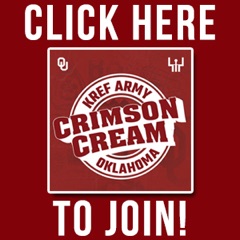The name, image and likeness landscape has felt lawless for much of its existence, but the NCAA on Monday made an attempt to put a few parameters on things.
The Division I Board of Directors issued NIL guidance to its schools to “to provide clarity for those engaging in a rapidly evolving NIL environment.” Much of the NCAA’s message to schools revolved around boosters and recruiting. The NCAA made note of all the “collectives” cropping up as of late, saying collectives could fall under the definition of being a booster.
The Athletic’s Nicole Auerbach obtained what got sent to schools. Here is the bulleted list of no-nos:
Guidance related to prospective student-athletes (also known as recruits)
- Recruiting conversations between an individual or entity that has triggered booster status (“booster/NIL entity”) and a PSA are not permissible.
- Booster/NIL entity may not communicate (e.g., call, text, direct message) with a PSA, a PSA’s family, or others affiliated with the PSA for a recruiting purpose or to encourage the PSA’s enrollment at a particular institution.
- An NIL agreement between a PSA and a booster/NIL entity may not be guaranteed or promised contingent on initial or continuing enrollment at a particular institution.
- Institutional coaches and staff may not organize, facilitate or arrange a meeting between a booster/NIL entity and a PSA (e.g., provide the individual or entity with a recruiting list or watch list, including the NCAA Transfer Portal).
- Institutional coaches and staff may not communicate directly or indirectly with a PSA on behalf of a booster/NIL entity.
- NIL agreements must be based on an independent, case-by-case analysis of the value that each athlete brings to an NIL agreement as opposed to providing compensation or incentives for enrollment decisions (e.g., signing a letter of intent or transferring), athletic performance (e.g., points scored, minutes played, winning a contest), achievement (e.g., starting position, award winner) or membership on a team (e.g., being on roster).
Guidance related to current student-athletes
- An NIL agreement between a SA and a booster/NIL entity may not be guaranteed or promised contingent on the initial or continuing enrollment at a particular institution.
- NIL agreements must be based on an independent, case-by-case analysis of the value that each athlete brings to an NIL agreement as opposed to providing compensation or incentives for enrollment decisions (e.g., signing a letter of intent or transferring), athletic performance (e.g., points scored, minutes played, winning a contest), achievement (e.g., starting position, award winner) or membership on a team (e.g., being on roster).
It essentially breaks down to the NCAA asking boosters not to pay recruits to go to their school or stay on their school’s team. It’s one thing to say that, but enforcing it will be a whole different animal.
There were also murmurs in the last week or so that the NCAA would make these rules retroactive, punishing programs for breaking the rules that the NCAA was still trying to forge. But the NCAA said these guidelines are effective Monday (May 9), but the release did state, “the board directed the enforcement staff to review the facts of individual cases but to pursue only those actions that clearly are contrary to the published interim policy, including the most severe violations of recruiting rules or payment for athletics performance.”
In the NCAA’s release, it twice mentioned school’s should “self-report” violations. Oklahoma State self-reported violations in the Lamont Evans/FBI investigation and got one of the harsher penalties levied out in the FBI fallout. So, it seems unlikely school’s will self-report anything in regards to players making money from potential boosters.
“Today, the Division I Board of Directors took a significant first step to address some of the challenges and improper behaviors that exist in the name, image and likeness environment that may violate our long-established recruiting rules,” said board chair Jere Morehead, president, University of Georgia. “While the NCAA may pursue the most outrageous violations that were clearly contrary to the interim policy adopted last summer, our focus is on the future. The new guidance establishes a common set of expectations for the Division I institutions moving forward, and the board expects all Division I institutions to follow our recruiting rules and operate within these reasonable expectations.”
The post NCAA Releases Name, Imagine and Likeness ‘Guidance’ appeared first on Pistols Firing.
